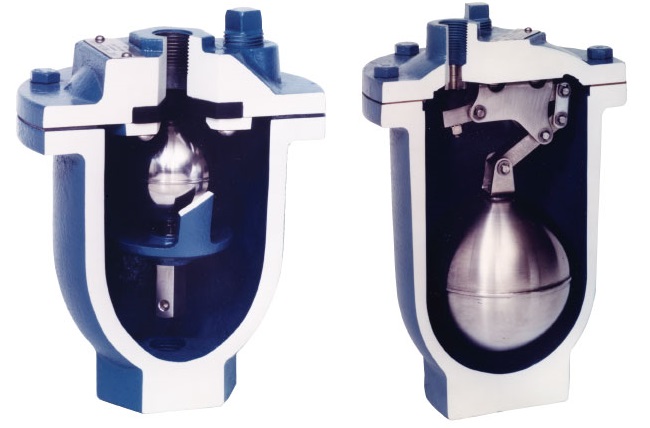Using Air Release Valves to reduce headloss in pumping application
This article describes how an engineer solved the problem of headloss in a pumping application by installing Air Release Valves at the high points to exhaust air even when the pipe is under high pressure.
09:00
I received a call from a long-standing customer who was having serious problems with a pumping application. He had a 240 horsepower Worthington Vertical Turbine Pump straining to deliver flow to the grid. The brand new pumps were putting out 265 feet of head and generating about half of the design flow.
10:00
We talked through all the obvious reasons for this headloss on the phone. My customer had been up and down the seven miles of 16” pipeline three times. The check valve was open, all the line valves were open, and the altitude valve at the tower was open. There were air valves at all the high points. My customer had no idea where the extra headloss coming from.
At this point we decided the only option was for me to fly out and have a look at the pipeline setup myself. After all, there are always logical explanations for things like this!
13:00
By Midday I had landed in Oswego and my customer was waiting anxiously. The headloss was preventing the pump from working efficiently, which was costing a lot of money! We drove straight to site and he was right - all the valves were properly positioned.
I had a hunch that there could be something wrong with the setup and asked him to drive out to the line and have a look at the air valve vault, positioned on a hill. My customer went down the manhole and shouted up that everything was in order…the butterfly isolation valve was open and the 4” air valve was not leaking etc.
He was missing one important characteristic of Air Valves. I called him up and we went back to the design offices.
15:00
I explained to my customer that there were 3 different types of Air Valves, an Air Release and Air Vacuum and a Combination Air Valve. I asked what type he installed and he told me he installed a Val-Matic 104S as an Air/ Vacuum Valve. I explained although an Air Vacuum valve has its place – they exhaust and admit air rapidly during filling and draining of the pipeline, but they do not open to relieve entrapped air when the pipeline is pressurised. The trapped air will increase headloss at the high point. The cumulative effect of several high points can be enough headloss to stop the pump all together.
We changed the design of the pipeline to include Air Release Valves to the Air Vacuum Valves, meaning that even under high pressure, air will be exhausted from the pipeline, thus preventing build up of headloss. We used Val-Matic’s computer program to properly locate and select air valves in pipelines.

Air Vacuum Valve: Used to exhaust large quantities of air upon system start-up, whilst allowing air to re-enter the line upon system shut down or system failure.
Air Release Valve: Used to continuously release accumulated air drawing system operation. As air enters the system, it displaces the water, allowing the float to drop and vent the air out of the valve.
To understand more about Val-Matic’s air valves for over coming common problems such as headloss, line restrictions and increased velocity: click here.
Get the latest process industry news
Interested in receiving even more industry-leading news from Process Industry Forum delivered directly to your inbox? Then sign up to our free newsletter. Bringing you the latest news, trends, innovations and opinion from across the process industry, our exclusive newsletter gives you all the industry insights of the moment in one, easy-to-digest bulletin. Stay ahead of the competition with regular process industry news instalments from PIF.

